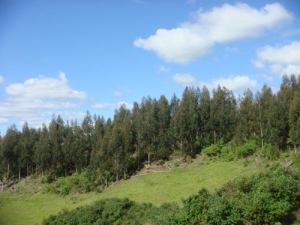Editorial: New Treeland?
OPINION: Forestry is not all bad and planting pine trees on land that is prone to erosion or in soils which cannot support livestock farming makes sense.
 Forest operations will continue in Nelson and Marlborough forests during summer, except when the fire risk is at its highest.
Forest operations will continue in Nelson and Marlborough forests during summer, except when the fire risk is at its highest.
Forest operations will continue in Nelson and Marlborough forests during summer, except when the fire risk is at its highest.
Andrew Karalus, estate manager for Nelson Management Ltd, says providing continuous work is important for those working in the industry and it enables the industry to attract and retain highly skilled people.
"It's a trade-off to some extent. The risk of fire can never be totally eliminated, but there are probably 1500 people working in forests in the region who rely on year-round work for their livelihoods. Then there are the servicing firms, the trucking companies and wood processors – there are a lot of locals who rely on a steady wood flow for their income."
Karalus says the weather conditions that led to the recent Parsons Rd, Wairau Valley fire were not unusual. The fire risk at the time was code blue – midway on the five step code – so the outbreak and its severity came as a surprise.
"For 15 years we have been successfully operating without any major fires under conditions where the fire risk has been much more severe than we have had so far this summer. We will learn more from the latest events and we are tapping into expert advice to find out what happened and to improve our controls."
He says the forest fire danger codes, which were developed as a collaboration between the forest industry and two Rural Fire Authorities have been under review for six months. The codes have been found to be quite sound. However more work needs to be done to respond to the conditions under which a fire is more likely to start and spread.
"Typically, in a drought such as we had last summer, we reach conditions of code red. We don't have anyone felling or working in the cut-over forest during the heat of the day. Smoking and fires are of course totally banned. After crews leave for the day, someone stays behind to check that the site is completely safe and nothing develops into a fire," Karalus says.
"More challenging is the highly changeable weather we are experiencing at present, where periods of high-risk come and go during the day. We need to be able to identify when this is happening and respond quickly to avoid fire starts."
At Pāmu’s Kepler Farm in Manapouri, mating has wrapped up at the across-breed Beef Progeny Test.
More than 150 people turned up at Parliament recently to celebrate the 20th anniversary of Horticulture New Zealand (HortNZ).
Biosecurity New Zealand says Kiwis should continue to keep an eye out for yellow-legged hornets (Vespa velutina) over the holiday season.
The Push-Up Challenge, an event which combines mental health and fitness, is set to launch in New Zealand in 2026.
Last month's Agritechnica event led to a wide group of manufacturers celebrating successes when the 2026 Tractor of the Year Competition winners, selected by a panel of European journalists, were announced in Hanover Germany.
According to the latest Federated Farmers banking survey, farmers are more satisfied with their bank and less under pressure, however, the sector is well short of confidence levels seen last decade.

OPINION: The release of the Natural Environment Bill and Planning Bill to replace the Resource Management Act is a red-letter day…
OPINION: Federated Farmers has launched a new campaign, swapping ‘The Twelve Days of Christmas’ for ‘The Twelve Pests of Christmas’ to…